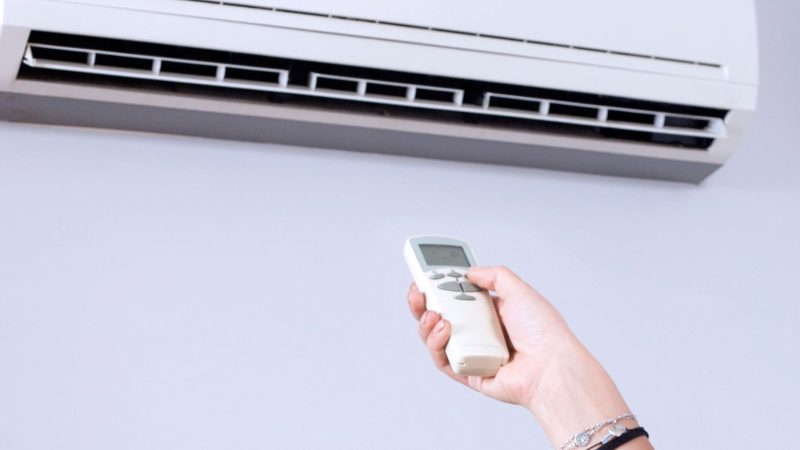
Striving for optimal comfort in our homes is a pursuit many of us can relate to. When it comes to maintaining a cozy environment, having efficient cooling and heating systems is key. In this article, I’ll share valuable tips to help you enhance the performance of your home’s climate control systems.
From maximizing energy efficiency to improving air quality, small adjustments can make a significant difference in how your cooling and heating systems operate. Whether it’s simple maintenance tasks or smart upgrades, I’ll guide you through practical strategies that can elevate the functionality of your home’s HVAC setup.
By implementing these tips, you’ll not only create a more comfortable living space but also potentially reduce your learn more. Join me as we delve into the world of efficient home cooling and heating systems, where a few tweaks can lead to substantial improvements in your everyday comfort.
Understanding HVAC Systems
When it comes to home comfort, understanding HVAC (Heating, Ventilation, and Air Conditioning) systems is key. These systems play a crucial role in maintaining optimal indoor temperatures throughout the year. Let’s delve into the different types of heating and cooling systems typically found in homes.
Types of Home Heating Systems
- Furnaces: Furnaces are one of the most common heating systems in residential properties. They work by heating air and distributing it through ductwork to different rooms. Furnaces can run on various fuels such as natural gas, propane, or electricity. By ensuring your furnace has a high AFUE (Annual Fuel Utilization Efficiency) rating, you can maximize energy efficiency and reduce heating costs.
- Boilers: Boilers heat water, which is then circulated through pipes to provide warmth. This water heating method is used for radiant floor heating systems, steam radiators, or baseboard radiators. Boilers are known for their energy efficiency and ability to provide consistent heat throughout the home. For a modern and stylish alternative, consider designer electric radiators that offer both functionality and aesthetic appeal
- Heat Pumps: Heat pumps are versatile systems that can provide both heating and cooling. They extract heat from the air or ground and transfer it indoors during the colder months. In the summer, they operate in reverse to remove heat from the indoor air, acting as an air conditioner.
- Central Air Conditioning: Central air conditioning systems use ducts to distribute cool air throughout the house. They consist of an indoor unit, typically located in a utility room or basement, and an outdoor unit that houses the compressor and condenser. Central AC systems are efficient at cooling large spaces and maintaining consistent indoor temperatures.
- Ductless Mini-Split Systems: Ductless mini-split systems offer flexibility and zoning capabilities for cooling different areas of the home independently. These systems consist of an outdoor compressor/condenser unit and one or more indoor air-handling units. They are ideal for homes without existing ductwork or for room additions.
Understanding the different types of home heating and cooling systems can help you make informed decisions when it comes to maintaining your HVAC system. By choosing the right system for your home’s needs and ensuring proper maintenance, you can create a comfortable living environment while optimizing energy efficiency.
Tips for Efficient Home Cooling
When it comes to efficient home cooling, optimizing the use of your air conditioner and upgrading to energy-efficient models are key. Here are some tips to help you make the most of your home cooling system:
Optimize Air Conditioner Use
I use a programmable thermostat to regulate the temperature based on my schedule. By setting it to a higher temperature when I’m away or asleep, I can save on energy costs without sacrificing comfort.
Regularly cleaning or replacing air filters is crucial for the efficient operation of my air conditioner. Clogged filters can restrict airflow, making the system work harder and consuming more energy.
I ensure that the area around my air conditioner unit is clear of obstructions to allow for proper airflow. Shrubs, debris, or other objects near the unit can hinder its performance.
Upgrade to Energy-Efficient Models
When considering an upgrade, I prioritize energy-efficient models with a high Annual Fuel Utilization Efficiency (AFUE) rating. These models consume less energy while effectively cooling my home.
Investing in a modern energy-efficient air conditioner not only enhances cooling efficiency but also reduces energy bills in the long run. I opted for a model with a high SEER (Seasonal Energy Efficiency Ratio) to ensure optimal performance.
By upgrading to energy-efficient models, I not only contribute to environmental conservation but also enjoy improved cooling performance and long-term cost savings.
Tips for Efficient Home Heating
When it comes to keeping your home warm and cozy during the colder months, there are several strategies you can implement to ensure efficient heating while minimizing energy consumption.
Regular Maintenance Tips
To maintain an efficiently running heating system, it’s crucial to perform regular maintenance tasks. One essential tip is to clean or replace the air filters in your heating system regularly. Clogged filters can restrict airflow, making your system work harder and less efficiently. By keeping the filters clean, you not only ensure optimal performance but also improve indoor air quality. Another important maintenance task is to schedule annual professional inspections and tune-ups for your heating system. These inspections can help identify and address any potential issues before they escalate, ensuring that your system operates at peak efficiency.
Thermostat Management Techniques
Properly managing your thermostat settings can significantly impact the efficiency of your home heating system. One effective technique is to set your thermostat to lower temperatures when you’re away from home or asleep. By reducing the temperature during these times, you can save on energy costs without compromising comfort. Investing in a programmable thermostat is a wise decision as it allows you to automate temperature adjustments based on your schedule. You can program the thermostat to lower the temperature when you’re not home and raise it before you return, maximizing comfort and energy savings.
By following these maintenance tips and thermostat management techniques, you can ensure that your home heating system operates efficiently, keeping you comfortable while minimizing energy consumption.





